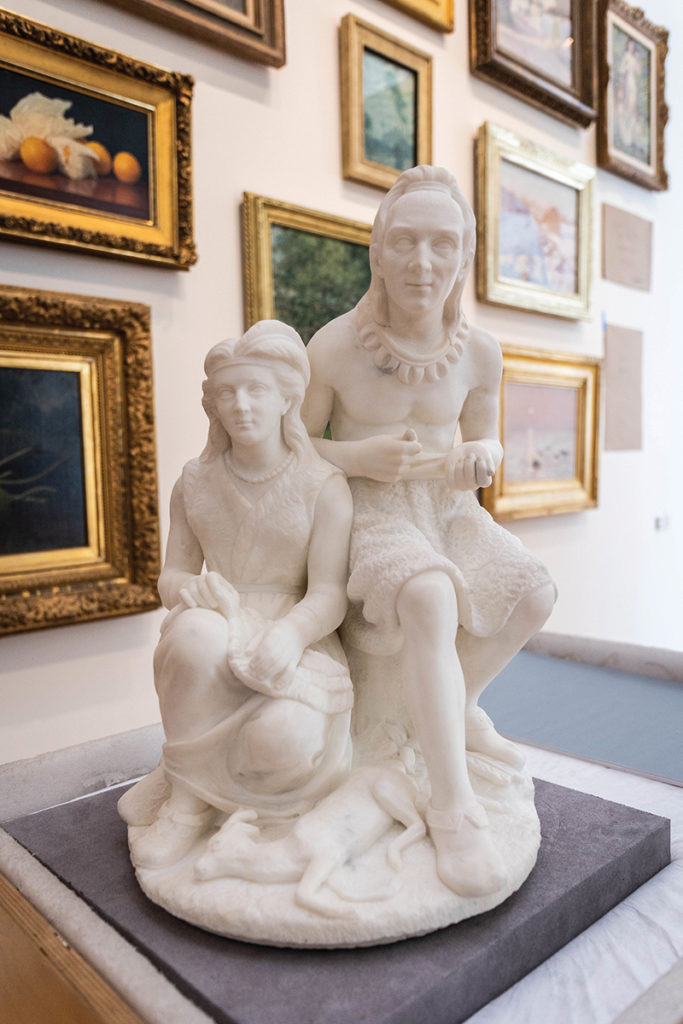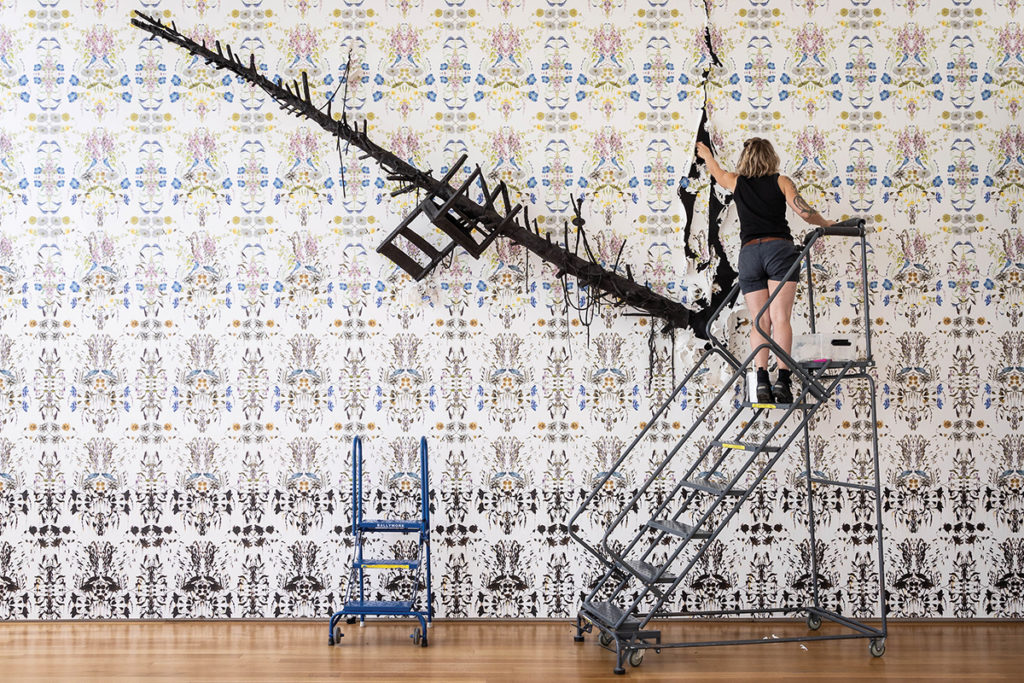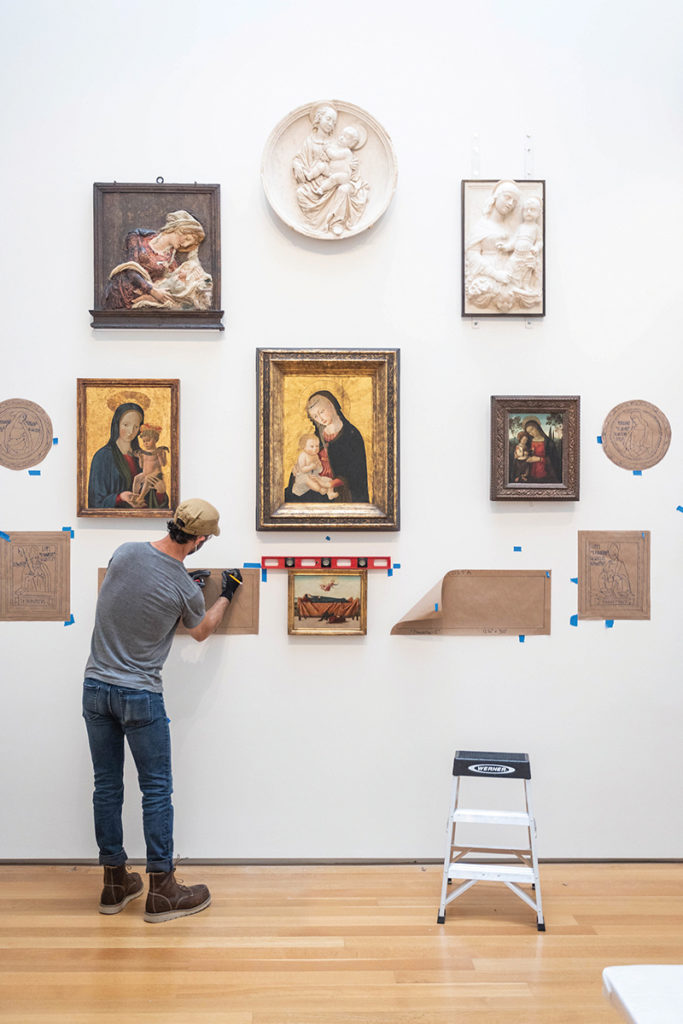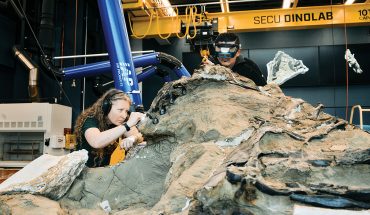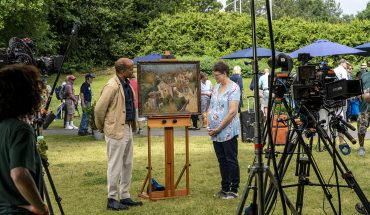A new acquisition at the NCMA — a marble piece called The Old Indian Arrow Maker and His Daughter — offers a fresh perspective on both the subject and the medium.
by Hampton Williams Hofer | photography by Trey Thomas
In 1866, the American artist Edmonia Lewis moved to Rome. There, within a vibrant community of artists, she worked in marble, sculpting busts of presidents and poets, queens and freedmen. Unlike her peers, most of whom sent their clay and plaster models off to Italian marble carvers to be cast into stone, Lewis did the work herself. She chiseled by hand, a tedious process, undertaken both for lack of funding and for prevention of fraud.
One of her few surviving works is a 21-inch marble sculpture called The Old Indian Arrow Maker and His Daughter. It’s a new acquisition of the North Carolina Museum of Art — monumental not in size but in the narrative that surrounds it.
“Edmonia Lewis was remarkable, overcoming so many seemingly insurmountable obstacles in her life,” says Lauren Applebaum, the NCMA’s curator of American art. The sculptor worked in a male-dominated world, and was a person of Black and Native American descent in a country where slavery was still legal and Indigenous peoples were derided. The daughter of a Chippewa mother who wove Indigenous souvenirs for a living and a Haitian father who worked as a gentleman’s servant, Lewis could not afford formal artistic training. She spent her childhood fishing, swimming, making moccasins and living up to her nickname, Wildfire. Lewis was orphaned at a young age and grew up with her maternal aunts in upstate New York. When her brother hit it big in the California gold rush, he sent her to receive a proper education at Oberlin College in Ohio, one of the first higher-learning institutions in the country to accept women of color. Then she moved to Boston to pursue a career as a sculptor, fashioning her own tools to make plaster medallions of famous abolitionists. She held her first solo exhibition in 1864, garnering attention with a bust of Col. Robert Shaw, a Union officer who led the first all-Black regiment in the Northeast during the Civil War. She made enough money from sales of copies of the bust that she was able to travel to Europe, eventually settling in Rome in 1866, a place that offered creative opportunities unavailable at home to a woman of color.
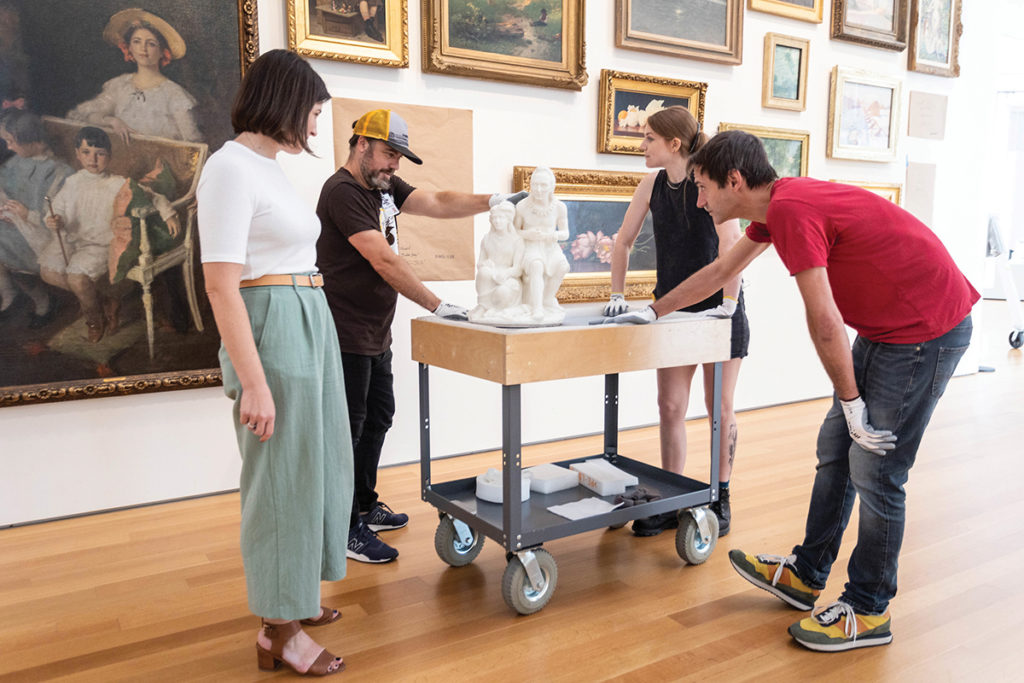
It was there that Lewis created The Old Indian Arrow Maker and His Daughter, inspired by arguably the most popular piece of literature of her time: Henry Wadsworth Longfellow’s 1855 poem Song of Hiawatha. “This sculpture had been on my radar,” Applebaum says, “and I knew it was important for us to acquire it.” While countless artists across all genres in the late 19th century drew inspiration from Longfellow’s poem, Lewis’ portrayal is different. The epic poem follows the legendary Ojibwe warrior Hiawatha and his love for a Dakota woman named Minnehaha in a fictional tragedy. There is a moment in the story when the suitor Hiawatha approaches Minnehaha and her father: At the doorway of his wigwam/ Sat the ancient Arrow-maker… At his side, in all her beauty/ Sat the lovely Minnehaha.
This is the moment of Lewis’ focus. In her sculpture, the Arrow-maker and Minnehaha, both with their hands at work, look outward as Hiawatha comes to greet them, the deer at their feet a symbol of courtship. The viewer, then, assumes the position of the advancing chief. “A prominent way of viewing Indigenous people at this time was as a vanishing race,” Applebaum says, “but Lewis is showing an intergenerational scene of a father and daughter, the daughter working on a traditional craft practice while father makes an arrowhead… it speaks to perpetuation.”
Valerie Hillings, the director of the NCMA, was intrigued by Applebaum’s passion for adding a Lewis piece to the museum’s collection. “I was particularly thinking, as a director, how does this artist connect to what’s here, or change what’s here?” Hillings says. As it turns out, Lewis fits right in. The museum’s Grand Portrait Gallery boasts Saul Under the Influence of the Evil Spirit, another marble sculpture carved by William Wetmore Story, an American living in Italy in the 1860s. There’s also Daphne, a marble bust of the Greek tree spirit by another American sculptor, Harriet Hosmer. Hosmer was also in Italy at the time, and one of few well-known female sculptors of her era. She became a friend and mentor to Lewis. While Lewis never achieved the commercial success of the other two, it’s fitting that her work sits alongside that of her contemporaries, more than a century later.
And Lewis isn’t the only artist at the NCMA who drew in- spiration from Longfellow’s popular poem. Thomas Moran’s 1875 painting, Fiercely the Red Sun Descending/ Burned His Way Along the Heavens, stuns at the museum with its fiery oil-on-canvas depiction of the two lines from the poem that became its title.
To these three works, the addition of Lewis’ The Old Indian Arrow Maker and His Daughter offers an alternate interpreta- tion, a parallel narrative. It’s the same medium, marble, from the same era — but a sympathetic, proud depiction of Native Americans, by a woman of Indigenous descent. It’s the same literary muse, but a different focal point, one that turns a lens on family and tradition, at a time when many were depicting Native Americans as savages.
And this is exactly the point of adding this piece, at a time when the museum is rethinking The People’s Collection with an eye towards inclusivity and broadening the narrative. Lewis is what Hillings calls an “anchor artist,” one who roots an exhibit, and in this case the anchor artist will help to tell the story of American art in a wider way, a fresher way. “What is rich about this work is that it has all this narrative about someone who was in a circle of artists working abroad, creating an incredible sculpture,” Hillings says. “And also that there is a woman in the portrait, that it’s a representation of a woman by a woman. It tells so many stories.”
This article originally appeared in the September 2022 issue of WALTER Magazine.

